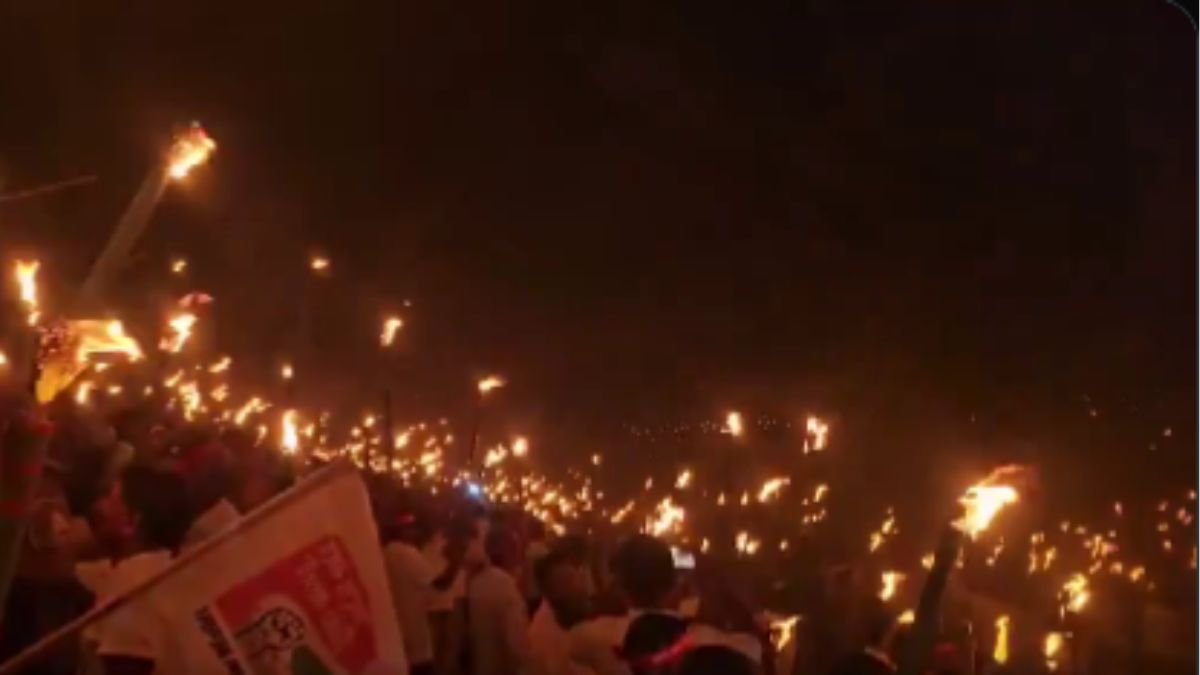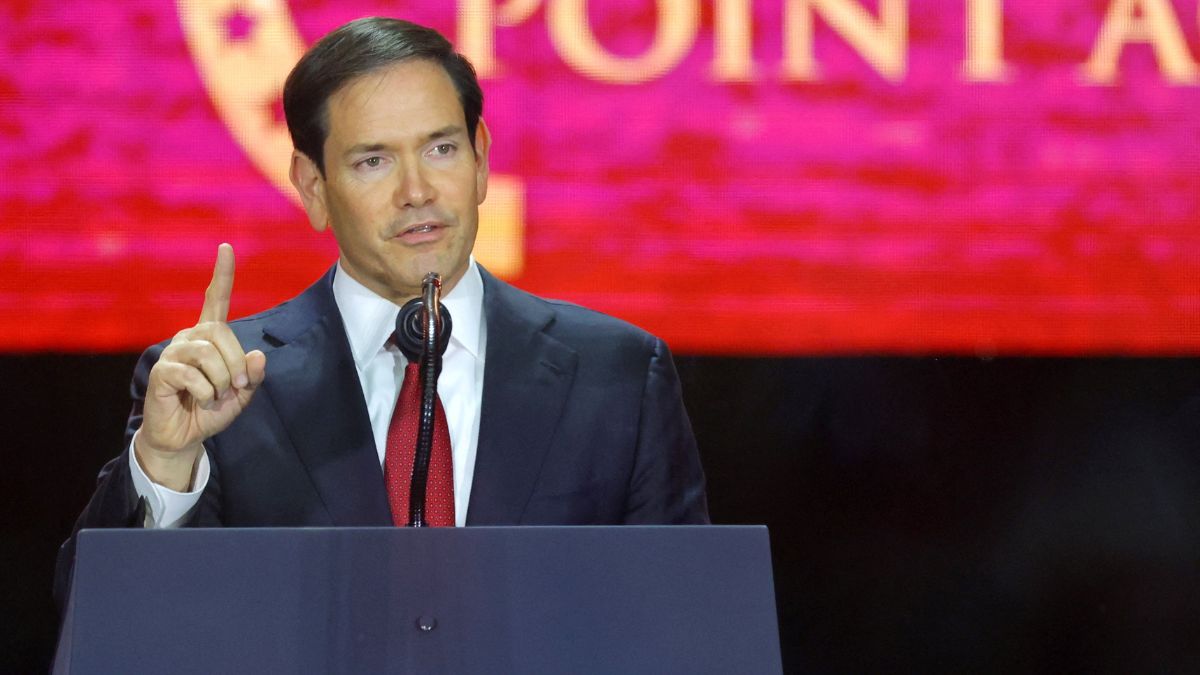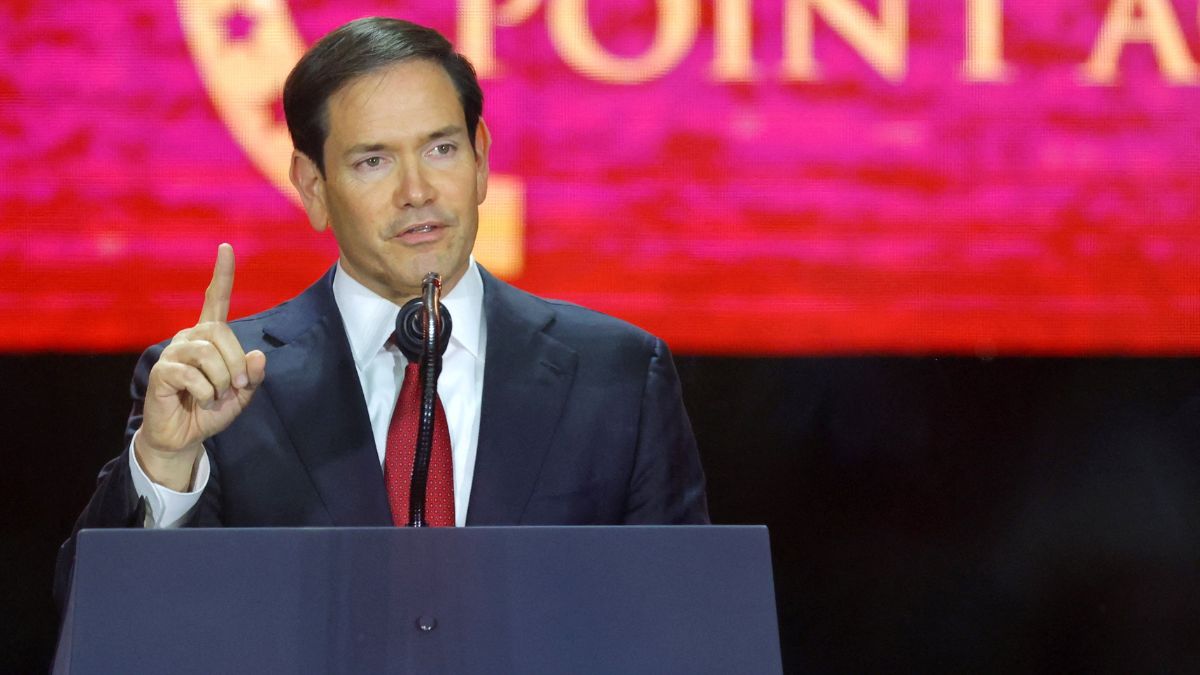The campus of Chittagong University on Sunday (October 19, 2025) saw what was part of a new wave of demonstrations spreading across Bangladesh.
Hundreds of students gathered near the university’s Shaheed Minar, forming a human chain illuminated by torches.
With placards in hand and slogans demanding “water justice,” they called for the immediate execution of the Teesta Master Plan and insisted that Bangladesh receive its “fair share” of water from the transboundary river.
The protest, organised largely by students from the Rangpur division, marked the latest in a series of coordinated demonstrations demanding implementation of the plan.
The participants described the project as vital for reviving agriculture, generating employment, and ensuring equitable water access for northern Bangladesh.
The event concluded with renewed appeals to “protect national interests and ensure water justice for Teesta-dependent regions,” according to reports from Bangladesh Sangbad Sangstha (BSS).
This rally followed multiple torchlit processions held on October 16 across five districts in northern Bangladesh under slogans such as “Wake up, save Teesta.”
The protests reflected long-standing frustrations over delayed water-sharing arrangements with India and a growing belief among Bangladeshis that the China-supported Teesta River Master Plan could deliver economic and environmental relief to the country’s most water-scarce region.
Why the Teesta River is at the centre of the controversy
Stretching roughly 414 kilometres, the Teesta River rises in the eastern Himalayas, from Pauhunri Mountain in the Indian state of Sikkim, before flowing through West Bengal and into Bangladesh’s Rangpur division, where it eventually merges with the Brahmaputra (Jamuna).
Both nations rely heavily on the river to sustain agricultural production and livelihoods. For Bangladesh, the Teesta is a critical lifeline.
Grand rally organized by BNP demanding immediate implementation of the Teesta Mega Project to save northern Bangladesh from drought and protect the livelihoods of millions affected by upstream water withdrawal by neighbouring country. pic.twitter.com/gQ4ftJFGxy
— Nasir Uddin Nasir (@NasirUddin64681) October 17, 2025
Millions of farmers in its northern districts depend on it for irrigation, yet recurring dry-season shortages have caused severe crop losses.
The International Food Policy Research Institute estimates that Bangladesh loses about 1.5 million tonnes of rice each year due to insufficient dry-season flows in the Teesta basin.
In India, the river’s importance is also considerable. It supports irrigation networks and hydropower projects, including infrastructure such as the Gazoldoba Barrage in West Bengal, which helps regulate water flows to farmlands and settlements downstream.
Despite their shared dependence, India and Bangladesh have struggled for decades to formalise an equitable water-sharing arrangement.
The first attempt to establish a water-sharing mechanism dates back to 1983, when a temporary agreement was drafted to allocate 39 per cent of Teesta water to India and 36 per cent to Bangladesh, leaving the remainder unallocated. However, the accord never came into effect.
Efforts to reach a lasting resolution gained momentum in 2011, when the two neighbours nearly finalised a new deal granting 37.5 per cent of the dry-season flow to Bangladesh.
Yet, at the last moment, West Bengal Chief Minister Mamata Banerjee withheld approval, arguing that diverting more water would harm the interests of farmers in her state. Since then, successive rounds of discussions have failed to produce a settlement.
As a result, Dhaka continues to allege that India releases inadequate water during lean months, worsening drought conditions in Bangladesh’s northern plains, while excessive monsoon discharges from upstream contribute to seasonal flooding.
The gridlock has persisted even as both governments publicly acknowledge the need for cooperation.
Compounding the urgency is the impending expiry of the Ganga Water Sharing Treaty of 1996 in 2026, which adds pressure to clarify transboundary water management frameworks.
How Bangladesh is using public sentiment to get close to China
Many protesters in Bangladesh now accuse India of wielding disproportionate influence over Dhaka’s environmental and resource policies.
This frustration has coincided with Bangladesh’s growing engagement with China, particularly under the country’s interim leadership. In March, Chief Advisor Muhammad Yunus met with Chinese President Xi Jinping in Beijing, where he lauded China as the “master of water management.”
The meeting resulted in a 50-year master plan proposal for river and floodplain management, prominently featuring the Teesta.
The joint statement issued after the visit confirmed that Bangladesh had invited Chinese enterprises to participate in the Teesta River Comprehensive Management and Restoration Project (TRCMRP).
The plan includes deepening the riverbed, building embankments and reservoirs, improving flood control, and establishing adjacent infrastructure such as satellite townships and road networks.
China reportedly offered a combined package of $2.1 billion through loans, grants, and investments, while Bangladesh sought approximately 6,700 crore taka ($546 million) in funding for the project’s initial phase.
Yunus’s decision marked a sharp policy departure from his predecessor, Sheikh Hasina, who in 2024 had publicly stated her preference for India, not China, to undertake the Teesta management project.
However, the change in Dhaka’s leadership and its more open approach to Chinese financing have altered the equation, making Beijing a central player in what was once an India-Bangladesh bilateral matter.
How China’s involvement reshapes the issue
The Teesta Master Plan forms part of China’s already expanding development portfolio in Bangladesh.
Beijing is already financing and constructing major infrastructure across the country — including facilities at Mongla Port, the Chattogram Economic Zone, and projects in sectors such as renewable energy, textiles, and the digital economy.
The proposed Teesta initiative aligns with China’s Belt and Road Initiative (BRI), under which Beijing has sought to expand its strategic and economic presence in South Asia.
For Dhaka, Chinese participation offers technical expertise and financing that India has been reluctant or unable to provide.
For New Delhi, however, the move signals potential encirclement by a geopolitical rival near one of India’s most sensitive borders.
The Teesta project’s location near Bangladesh’s Lalmonirhat district, close to India’s Siliguri Corridor, makes this development particularly sensitive.
The narrow land strip, often referred to as the “Chicken’s Neck,” connects India’s northeastern states to the rest of the country and serves as a vital logistical and military artery.
What India’s strategic concerns are
Indian policymakers and analysts have repeatedly expressed apprehension that any Chinese-backed construction near the Siliguri Corridor could have military or intelligence implications.
The corridor’s strategic importance lies in its vulnerability: at its narrowest point, it is only about 20-22 kilometres wide, making it a potential chokepoint in the event of conflict or regional instability.
Experts have warned that if China gains operational or surveillance capabilities near the Teesta basin, it could monitor Indian troop movements or infrastructure across the corridor.
These fears have been amplified by reports of renewed activity at the Lalmonirhat airbase, a World War II-era facility located near the proposed Teesta project area.
However, Major General Mohammad Nazim-ud-Daula, representing the Bangladesh Army’s Directorate of Military Operations, stated in May that the airbase’s revival was intended “to support national needs, including the Aviation and Aerospace University,” and that there was “no information about Chinese involvement.”
Even with these clarifications, India remains wary of China’s expanding role in its immediate neighbourhood, particularly after Beijing’s large-scale hydroelectric projects on the Yarlung Tsangpo (Brahmaputra) in Tibet — which already influence downstream water flows towards India and Bangladesh.
How Tessta issue is playing into Bangladeshi politics
The Teesta issue is now intertwined with domestic politics in Bangladesh. The Bangladesh Nationalist Party (BNP), the principal opposition force, has been vocal in supporting the project’s implementation.
Asadul Habib Dulu, BNP’s Rangpur divisional organising secretary and coordinator of the Teesta Protection Movement, served as the chief guest at the October 16 rally.
Million rallied across 100 miles riverside (teesta📍) region of north of Bangladesh⚠️
— imtiaz 🇧🇩🇵🇸 (@_imtiaz1899) October 17, 2025
Demanding fare share of river water from india. October 2025⚠️pic.twitter.com/nuvAn0WCyU
Earlier in February, the BNP had staged a 48-hour protest programme pressing for the same demand.
Dulu reiterated that the party would “continue their campaign until the work begins — and if that does not happen under the interim government rule, they will implement the project once they are voted to power.”
BNP leaders argue that the Teesta Master Plan would not only secure Bangladesh’s northern agricultural regions but also assert the nation’s sovereignty in managing its own water resources.
Their support for the project has gained traction among sections of the population who believe that India has long stalled meaningful progress.
Meanwhile, critics of the China-backed plan caution that financial dependence on Chinese loans could expose Bangladesh to future debt risks.
However, these concerns have not significantly weakened the project’s domestic appeal, especially in regions suffering acute water shortages.
General elections in Bangladesh are expected to be held next year in February.
How the Teesta plan may affect the environment
Bangladesh’s leadership argues that the Teesta River Comprehensive Management and Restoration Project (TRCMRP) will bring tangible benefits — mitigating floods, conserving water during the dry season, and improving livelihoods in the northern plains.
Beyond politics, the Teesta dispute also highlights the urgent environmental challenges facing the region.
Climate change, erratic rainfall, and glacial retreat in the eastern Himalayas have affected river flows, making sustainable water management more complex.
Bangladesh’s call for a “fair share” of Teesta waters seeks to balance agricultural needs with long-term ecological stability.
Experts on both sides of the border have emphasised that unilateral projects, whether by India or China, risk destabilising the river’s natural equilibrium.
Also Watch:
With inputs from agencies


)

)
)
)
)
)
)
)
)



